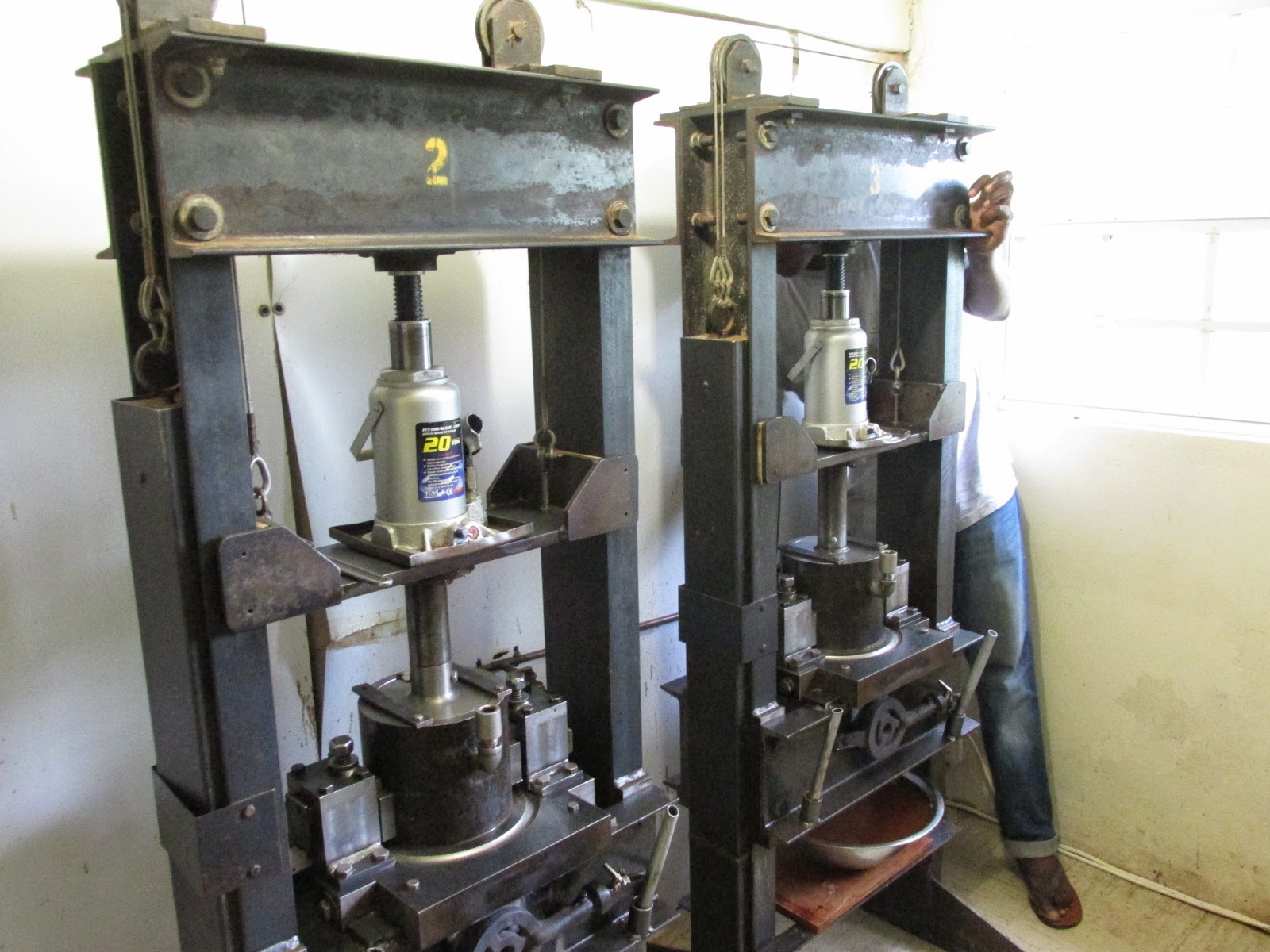June 16th, 2014
 |
| Our tour guide Winfield |
After a delicious buffet lunch of traditional island food: bbq chicken and fish, breadfruit, green figs, plantains, rice and peas, mac and cheese, coleslaw, and fruit juice.....we toured River Run Rum factory. What? Another rum factory tour? Yes. As I have mentioned before, rum has a very deep and troubling history that is part of each and every island in the Caribbean. Just like each island is different, each island's rum story is different. In fact, each rum distillery history is unique.
 |
| Original water wheel |
Unlike most of the current day rum factories in the Caribbean, River Run produces rum pretty much the same was as they did back in 1785 when the factory was founded. Many Caribbean rum factories use molasses in modern times to make the rum. River run still uses 100% sugar cane from their surrounding cane fields as well as from local farmers around the island. They employ 90 local workers.
 |
| Sugar cane bundles directly from the cane fields |
The original water wheel is still used to power the cane press. The water comes from a dammed lake through a sluice.
 |
| Water wheel turns the gears that power the press |
Crushed cane is dried in the sun and becomes bagasse. This is the fuel that feeds the fire for boiling the cane juice. Any leftover bagasse is turned into mulch and used in the cane fields as fertilizer.
 |
| Feeding the press - most dangerous job in the factory |
 |
| Cane juice flowing out of the press |
The juice is drained off gravity, while bits are scooped out and then it flows through a screen and is funneled into the main building.
 |
| Filtering through a screen |
 |
| Flowing into main building |
The cane juice is ladled through a series of copper basins and boiled in the last one.
 |
| Copper basins |
Once the correct sugar concentration is reached the liquid is put in a tank for cooling and the yeast process starts. From there it's pumped into concrete fermentation tanks
 |
| Concrete fermentation tanks |
After several days, the rum is ready for distillation. They use wood here from the surrounding grounds because it burns hotter than the bagasse.
 |
| Distillation |
 |
| Distillation |
A hydrometer tells them when the correct level of alcohol has been reached.
 |
| Hydrometer |
It is then
hand scooped into Igloo coolers which are used at the
ONE hand bottling station.
 |
| Igloo coolers used for bottling |
 |
| The ONE bottler |
The final product is a very, very, very strong rum. I am talking SUPER strong. So strong that it cannot be taking on an airplane because it has so much alcohol and is too flammable. Therefore they make a second type of rum that is basically the strong rum with distilled water added so that it can be legally taken onto an airplane. Make no mistake, this rum is still very strong as well.
 |
| Taste tester Diane |
Did I mentioned River Run is HIGHLY flammable?
Winfield says they don't export because they aren't able to keep up with local demand. Hum? I question that this is the full story. River Run is very much the working mans rum being local, cheap and
strong.
It was an interesting tour to see the original process using actual sugar cane. The rum itself? Um.....pretty rough stuff.





















































